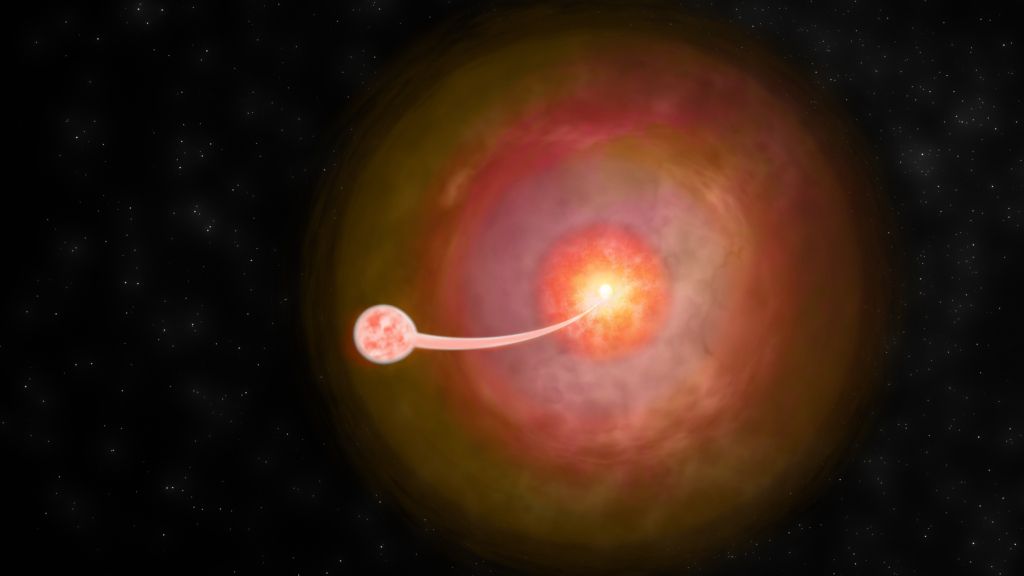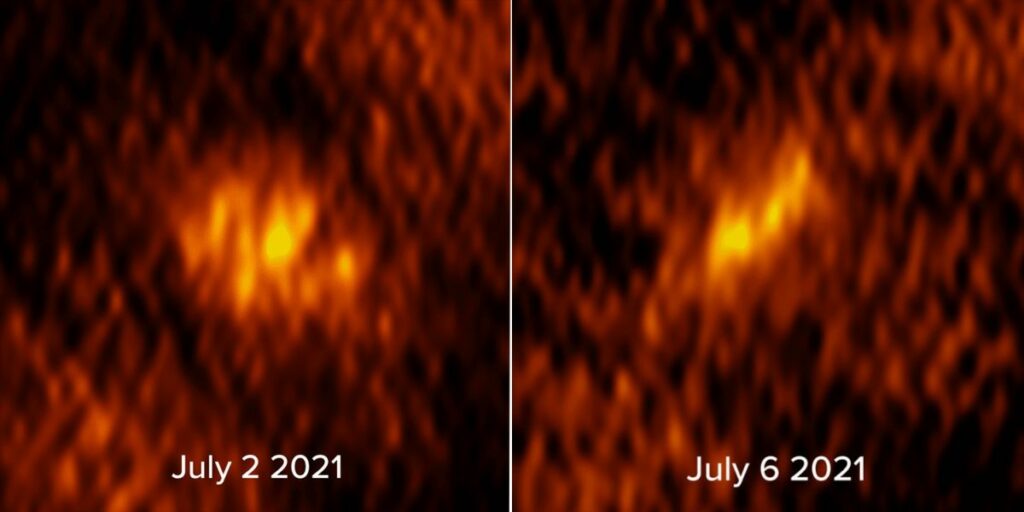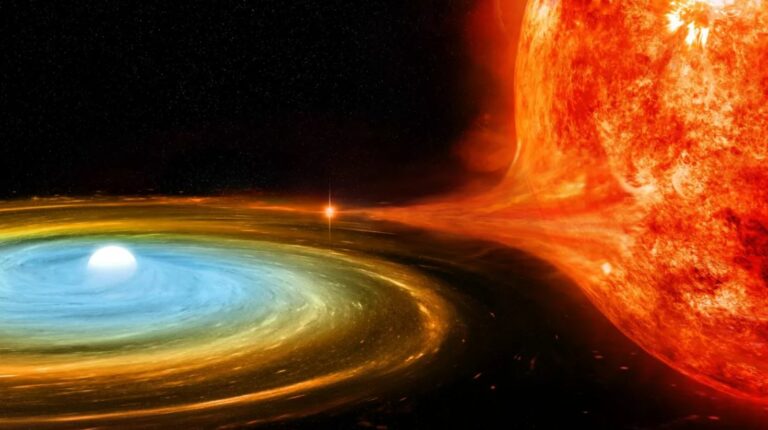Unraveling the Enigma of Strange Radio Emissions from a Rapidly Fading Nova: Astronomers Intrigued
Astronomers are captivated by the fastest and most dramatic nova ever witnessed, yet the mysteries surrounding it continue to outnumber the answers. This nova, named V1674 Hercules, erupted on June 12, 2021, within a peculiar binary star system comprised of a white dwarf and a torn companion in the Hercules constellation. Its extraordinary luminosity, reminiscent of a resonating bell, coupled with its enigmatic and vigorous winds propelling stellar material into space, left astronomers puzzled.
Intriguingly, a recent study unveiled anomalous radio emissions emanating from deep within the V1674 Hercules nova, diverging from the anticipated high-temperature emissions associated with such celestial events. Montana Williams, a leading researcher from New Mexico Tech, leading the investigation, stated, “Currently, we are investigating whether the non-thermal energy arises from the collision of gas clusters, generating shocks, or if alternative factors are at play.”
During the 242nd meeting of the American Astronomical Society, Williams disclosed these peculiar emissions in a news briefing held in Albuquerque, garnering significant attention. These emissions may originate from interactions among ejected stellar fragments, a rarity for classical novas like V1674 Hercules, Williams further revealed.

To probe V1674 Hercules, Williams and her team employ the Very Long Baseline Array, a network of ten antennas spanning from Hawaii’s Mauna Kea to the Virgin Islands’ Saint Croix. By merging this data with observations from other telescopes, including the Karl G. Jansky Very Large Array in New Mexico and the space-based Nuclear Spectroscopic Telescope Array (NuSTAR), the researchers aim to elucidate the origins of these mysterious radio emissions.
The speed of a nova’s evolution is typically measured by the duration it takes for the explosion’s brightness to diminish by two magnitudes from its peak. Events of exceptional velocity conclude in less than 10 days, while moderate ones span up to 80 days. Slower events encompass a range of 80 to 150 days. Remarkably, the V1674 Hercules nova, visible to the naked eye due to its brilliant illumination, dimmed by two magnitudes in a mere 1.1 days, approximately one-sixth of its original luminosity.
Williams emphasized, “V1674 Her at 1.1 days represents an extreme case within an already extraordinary range, thus earning the distinction of being the fastest nova.”

A recently unveiled pair of images captured by Williams and her team vividly illustrates the drastic pulsations in brightness between July 2, 2021, and July 6, 2021. Unlike supernovas, which obliterate stars in violent explosions, classical novas like V1674 Hercules leave the host stars intact, providing ample opportunities for astronomers to study their mechanisms through multiple occurrences.
Beyond the immediate scope, delving into the behavior and evolution of V1674 Hercules could illuminate the grand tapestry of galactic evolution across vast time spans. The ejected material from novas eventually becomes recycled by neighboring galaxies, fueling the birth of subsequent generations of stars and planets, making this investigation of utmost significance.
Do not forget to share your opinion with us to provide you with the best posts !




0 Comments